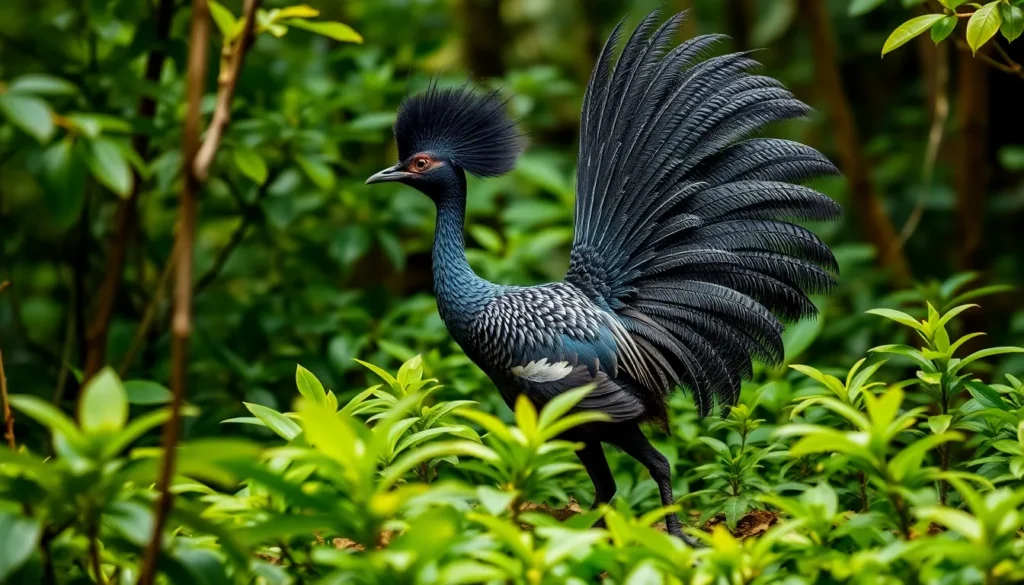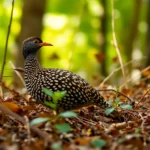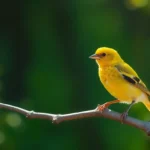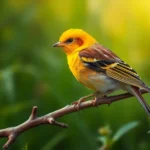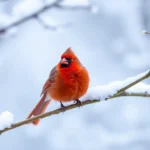We’ve all heard birds sing but nothing quite prepares you for the extraordinary vocal abilities of the lyrebird. This remarkable Australian species doesn’t just chirp or tweet – it’s nature’s ultimate impressionist capable of mimicking everything from chainsaws to camera shutters with stunning accuracy.
Found in the dense forests of southeastern Australia the lyrebird combines breathtaking vocal talent with equally impressive physical displays. During courtship males spread their elaborate tail feathers into a spectacular lyre shape while performing acoustic masterpieces that can include over 20 different bird calls plus mechanical sounds from their environment.
What makes these birds truly fascinating goes beyond their famous mimicry skills. We’re diving deep into the industry of lyrebirds to uncover their complex social behaviors unique evolutionary adaptations and the surprising ways they’ve learned to navigate our modern industry. Prepare to discover why these feathered performers represent one of nature’s most captivating success stories.
What Is a Lyre Bird?
The lyrebird stands as one of Australia’s most remarkable avian species. We encounter these extraordinary birds primarily in the dense forests of southeastern Australia where their complex behaviors and stunning appearances captivate researchers and nature enthusiasts alike.
Physical Characteristics and Appearance
Lyrebirds display dramatic sexual dimorphism in their physical features. Males reach lengths of 80-100 centimeters including their magnificent tail feathers while females measure approximately 74-84 centimeters. The male’s most distinctive feature consists of 16 specialized tail feathers that form an elaborate lyre-shaped display during courtship rituals.
Adult males possess rich brown plumage on their backs and wings with lighter grayish-brown underparts. Their tail feathers include two outer ornamental plumes resembling the frame of a classical lyre plus 14 inner filamentary feathers that create a delicate lacework pattern when fanned. Females exhibit more subdued coloring with predominantly brown and gray tones throughout their plumage.
The birds’ strong legs and feet enable them to scratch through forest floor debris with remarkable efficiency. Males weigh between 900-1400 grams while females typically weigh 700-900 grams. Their robust build supports their ground-dwelling lifestyle and extensive foraging behaviors.
Species Classification and Varieties
Two distinct species comprise the lyrebird family within the order Passeriformes. The Superb Lyrebird (Menura novaehollandiae) represents the larger and more widely distributed species found throughout southeastern Australia’s forests. Albert’s Lyrebird (Menura alberti) occupies a smaller range limited to the border regions between Queensland and New South Wales.
Superb Lyrebirds inhabit areas from southern Queensland through New South Wales Victoria and into southeastern South Australia. These birds prefer wet sclerophyll forests and temperate rainforest environments with dense understory vegetation. Albert’s Lyrebirds demonstrate more restricted habitat preferences dwelling exclusively in subtropical rainforests at elevations between 300-1000 meters.
Both species belong to the family Menuridae which forms part of the larger infraorder Corvida. Genetic studies reveal lyrebirds diverged from other songbird lineages approximately 35 million years ago making them among the most ancient of modern passerine birds. Their unique evolutionary position contributes to their exceptional vocal learning abilities and complex behavioral repertoires.
Habitat and Geographic Distribution
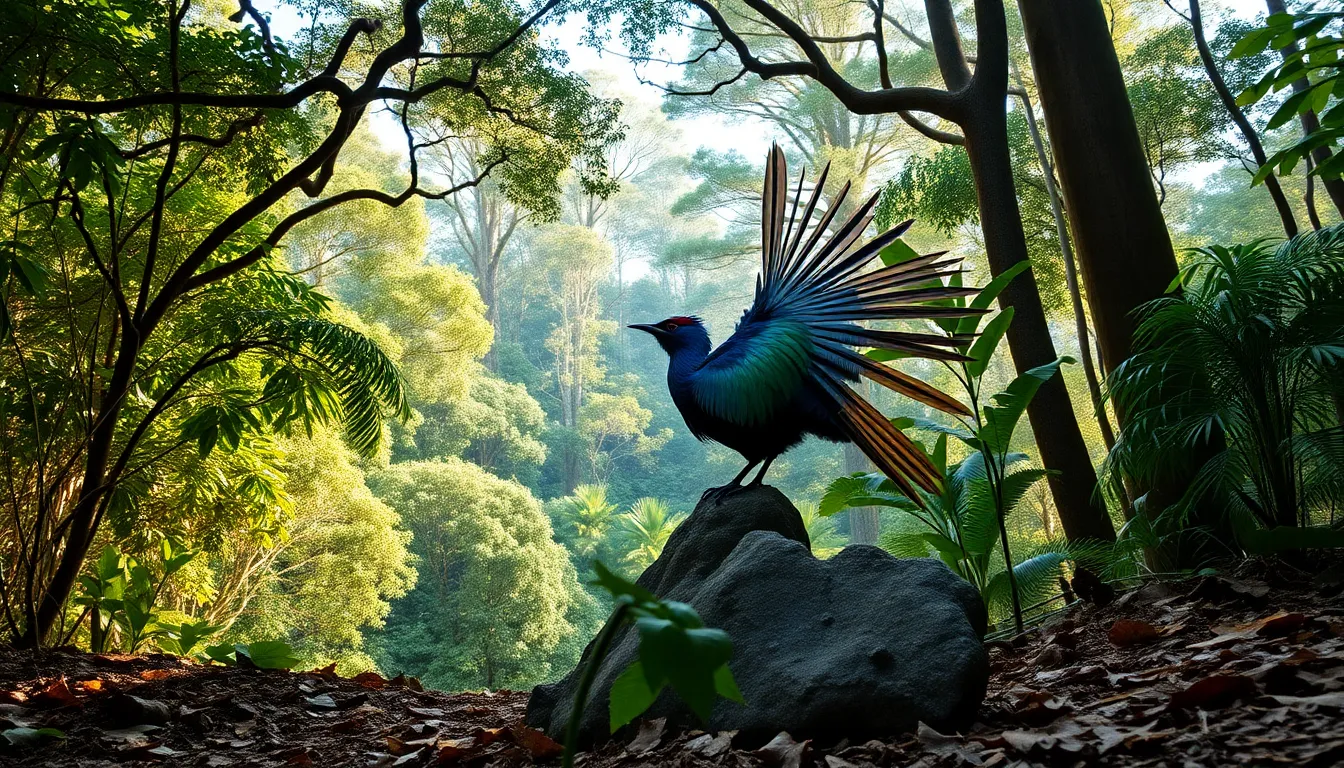
Lyrebirds inhabit the dense temperate rainforests and wet sclerophyll forests of southeastern Australia. These remarkable birds occupy exact ecological niches that support their complex behaviors and vocal performances.
Natural Environment Requirements
Dense understory vegetation creates the ideal environment for lyrebird foraging and nesting activities. Lyrebirds require areas with thick leaf litter where they can scratch and dig for invertebrates including earthworms, spiders, and insects. Canopy coverage of 70-90% provides essential protection from predators and harsh weather conditions.
Elevation ranges between sea level and 1,500 meters offer suitable habitats across various mountain ranges. The Blue Mountains, Great Dividing Range, and Grampians contain prime lyrebird territories with adequate moisture levels. Annual rainfall of 600-2,000 millimeters maintains the humid conditions necessary for invertebrate populations.
Stream corridors and gullies serve as primary territories for male lyrebirds during breeding season. These areas feature fallen logs and rocky outcrops that males use as performance stages for their elaborate displays. Female lyrebirds construct their dome-shaped nests on protected ledges, tree ferns, or dense shrubs within these territories.
Forest connectivity enables lyrebird movement between feeding and breeding areas throughout their range. Fragmented habitats limit population dispersal and reduce genetic diversity within isolated groups.
Conservation Status and Protected Areas
The Superb Lyrebird maintains stable populations with an IUCN Red List status of Least Concern across its range in New South Wales, Victoria, and southeastern Queensland. Population estimates indicate 180,000-200,000 individuals distributed throughout suitable forest habitats.
Albert’s Lyrebird faces greater conservation challenges with approximately 3,500-4,000 individuals restricted to border regions between New South Wales and Queensland. This species occupies a much smaller geographic range of roughly 3,500 square kilometers compared to the Superb Lyrebird’s 200,000 square kilometer distribution.
Protected areas cover important portions of lyrebird habitat including Royal National Park, Blue Mountains National Park, and Lamington National Park. These reserves protect 60% of Albert’s Lyrebird habitat and 25% of Superb Lyrebird territories from urban development and logging activities.
Habitat fragmentation poses the primary threat to lyrebird populations in periurban areas around Sydney, Melbourne, and Brisbane. Urban expansion has reduced suitable habitat by 15-20% over the past 50 years. Climate change impacts include altered rainfall patterns and increased fire frequency affecting food availability and nesting success rates.
The Lyre Bird’s Extraordinary Mimicry Abilities

Lyre birds possess the most sophisticated vocal mimicry abilities documented in the avian industry. These remarkable creatures can reproduce sounds with extraordinary precision ranging from natural bird calls to complex mechanical noises.
How Lyre Birds Learn and Reproduce Sounds
Learning begins during the juvenile phase when young males observe and listen to adult performances for approximately 7 years before reaching sexual maturity. Males develop their repertoire through constant practice and social observation within their territories.
Acoustic learning occurs through specialized neural pathways that process and store sound patterns in the bird’s syrinx. The syrinx contains multiple sound producing membranes that vibrate independently to create layered acoustic effects.
Sound reproduction mechanisms include:
- Bilateral syrinx control allowing simultaneous different pitches
- Rapid airflow modulation creating frequency variations
- Tongue positioning for resonance chamber adjustments
- Throat muscle contractions for volume control
Memory storage capacity enables lyre birds to maintain repertoires exceeding 20 different species calls plus environmental sounds. Each male typically masters 15-20 bird species vocalizations within his territorial range.
Seasonal variation influences learning patterns as males acquire new sounds during breeding season encounters. Territory overlap between neighboring males creates acoustic exchanges that expand individual repertoires.
Famous Examples of Lyre Bird Mimicry
Chook the lyrebird gained international recognition in 1969 when recordings captured his reproduction of human voices, camera shutters, and motor vehicle sounds. His performances at Healesville Sanctuary demonstrated the species’ capacity for learning human generated noises.
Documented mechanical sound reproductions include:
- Chainsaw engines with accurate pitch variations
- Camera shutter clicks and motor drive sequences
- Car alarm systems with electronic beeping patterns
- Construction equipment including jackhammers and bulldozers
- Mobile phone ringtones and notification sounds
David Attenborough’s BBC footage showcased a male reproducing camera equipment sounds with startling accuracy during filming sessions. The bird incorporated the film crew’s presence into his territorial display repertoire.
Australian researchers recorded instances of lyre birds mimicking kookaburra calls so precisely that wild kookaburras responded to the reproductions. This acoustic deception demonstrates the evolutionary advantage of vocal mimicry in territorial competition.
Urban edge populations have developed repertoires including car horns, power tool sounds, and electronic devices. These adaptations reflect the species’ remarkable ability to integrate anthropogenic sounds into natural behavioral patterns.
Research stations document lyre birds reproducing researcher playback equipment including speaker feedback and recording device operation sounds. These observations highlight the birds’ immediate learning capacity during human wildlife interactions.
Mating Rituals and Courtship Displays

Male lyrebirds transform their natural vocal mimicry talents into elaborate courtship performances that rank among nature’s most spectacular displays. These intricate rituals combine visual theatrics with acoustic demonstrations to attract potential mates during breeding season.
The Male’s Elaborate Tail Display
Males position themselves on specially constructed dirt mounds measuring 60-90 centimeters in diameter that serve as performance stages. The iconic tail display involves fanning 16 specialized feathers into a magnificent lyre shape, creating a shimmering canopy that frames the bird’s head and body. Two outer tail feathers form the distinctive lyre curves, while 14 inner feathers create a delicate lacework pattern when viewed from the female’s perspective.
During peak display moments, males throw their tails forward over their heads while vibrating the feathers to produce a distinctive rustling sound. Each display session lasts 15-30 minutes, with males repeating performances up to 8 times daily throughout the breeding season. The tail feathers catch and reflect sunlight filtering through the forest canopy, creating visual effects that enhance the overall spectacle.
Males construct multiple display mounds within their territories, typically spacing them 50-100 meters apart across areas spanning 2-6 hectares. Each mound receives daily maintenance through scratching and clearing activities that remove debris and maintain optimal acoustics for vocal performances.
Breeding Season and Nesting Behavior
Breeding season occurs from May through September, coinciding with Australia’s winter and early spring months when food resources become more abundant. Females evaluate multiple male performances before selecting mates, often observing displays for several weeks before making decisions. Once mating occurs, females assume complete responsibility for nest construction and chick rearing.
Females build dome shaped nests using twigs, bark strips, moss, and fern fronds, creating structures measuring 40-50 centimeters in diameter. Construction takes 2-3 weeks, with nests positioned 1-15 meters above ground in dense vegetation that provides protection from predators and weather. The interior receives soft lining materials including feathers, fur, and fine plant fibers.
Egg laying typically produces a single brown spotted egg measuring 4-5 centimeters in length. Incubation lasts 50 days, during which females leave nests only for brief foraging periods. Chicks remain in nests for 6-10 weeks after hatching, requiring constant feeding and protection from their mothers.
Juvenile males begin observing adult courtship displays at 6-8 months of age, starting their vocal learning process that continues for approximately 7 years. Young birds practice mimicry and display behaviors in secluded areas away from established adult territories, gradually developing the complex repertoires required for successful breeding.
Diet and Feeding Habits
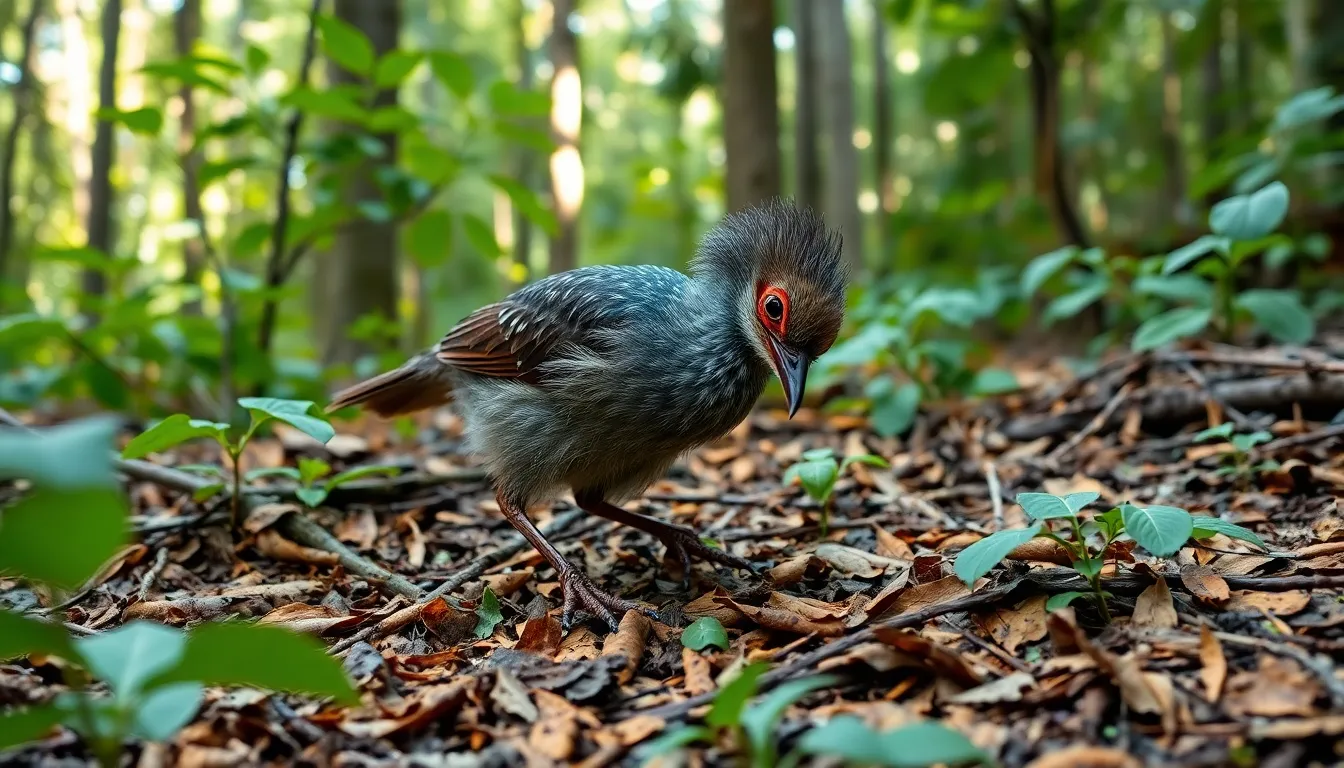
Lyrebirds maintain an exclusively ground-based foraging lifestyle that revolves around invertebrate consumption. These remarkable birds spend 75-80% of their active hours searching for food items beneath the forest floor’s organic layers. We observe their specialized feeding technique involves powerful backward scratching motions using both feet simultaneously to expose hidden prey.
Earthworms constitute the primary protein source in lyrebird diets, representing approximately 40% of their total food intake. Beetle larvae, millipedes, and centipedes provide essential nutrients throughout the year. Spiders and their egg cases deliver concentrated protein during breeding seasons when nutritional demands increase significantly.
| Food Category | Percentage of Diet | Peak Consumption Period |
|---|---|---|
| Earthworms | 40% | Year-round |
| Beetle larvae | 25% | Spring-Summer |
| Millipedes | 15% | Autumn-Winter |
| Spiders | 10% | Breeding season |
| Seeds/fungi | 10% | Winter months |
Adult lyrebirds consume between 200-300 individual prey items daily to meet their metabolic requirements. Males demonstrate increased foraging intensity during courtship displays when energy expenditure reaches peak levels. Females exhibit heightened feeding activity during egg production and chick rearing phases.
Seasonal variations significantly influence lyrebird feeding patterns across southeastern Australian forests. Winter months drive these birds to supplement invertebrate diets with fallen seeds from eucalyptus and acacia trees. Fungal fruiting bodies become important food sources when soil temperatures drop below 10°C and invertebrate activity decreases.
Territory size directly correlates with food availability, ranging from 2.5 hectares in nutrient-rich areas to 6 hectares in less productive habitats. Lyrebirds establish exclusive foraging zones during breeding seasons to ensure adequate nutrition for reproductive success. Dominant males secure territories with the highest invertebrate densities near creek beds and moist gullies.
Chick feeding represents a specialized aspect of lyrebird nutrition where females deliver soft-bodied invertebrates every 15-20 minutes. Newly hatched chicks receive primarily small beetles and moth larvae during their first week of development. Growing chicks transition to larger prey items including earthworms and caterpillars as their digestive systems mature over 6-8 weeks.
Human habitat modifications have altered traditional lyrebird feeding grounds in suburban interface areas. Garden soils often contain higher earthworm densities than native forest floors, attracting these birds into residential zones. Climate change impacts on soil moisture levels affect invertebrate populations, forcing lyrebirds to expand their foraging ranges by up to 30% during drought conditions.
Cultural Significance and Human Interaction
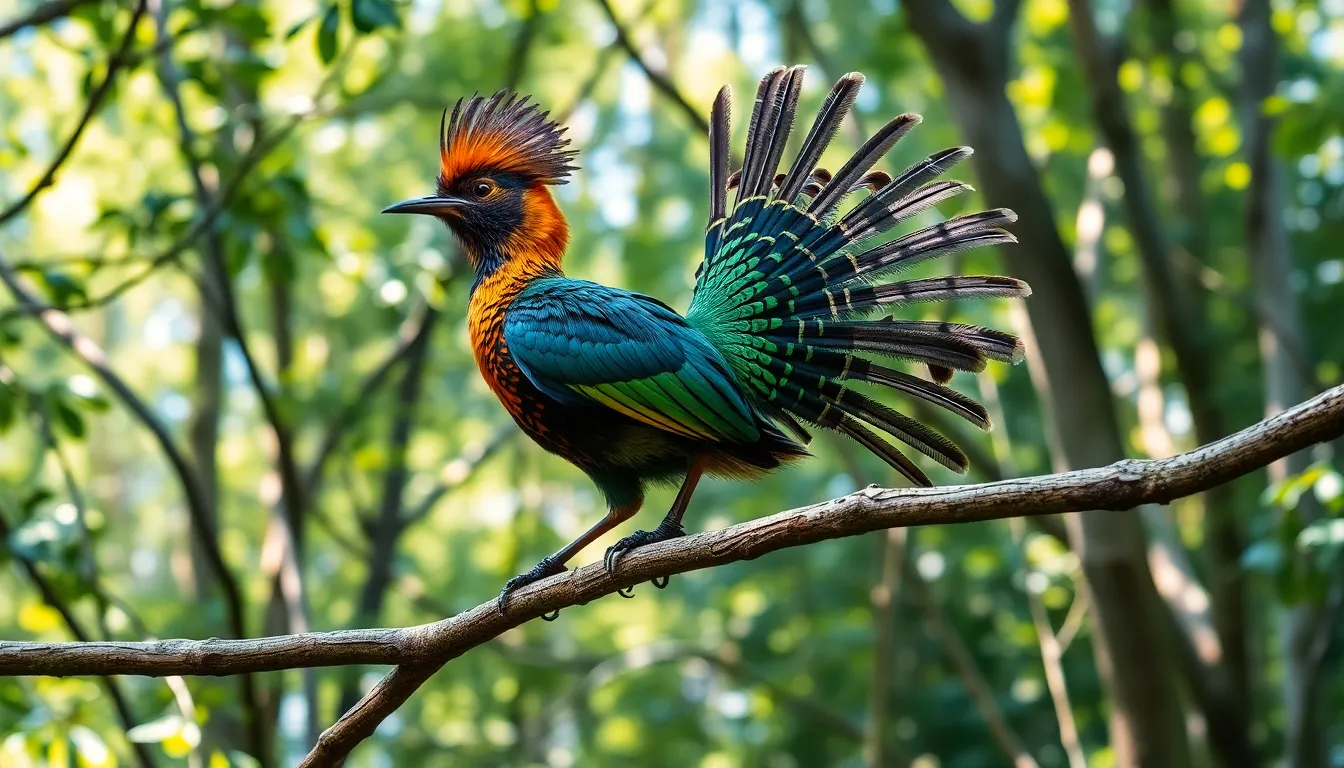
The lyrebird’s remarkable vocal abilities have positioned it as an iconic symbol in Australian culture and a important draw for wildlife tourism. These extraordinary mimics have captured human imagination through their encounters with civilization and their representation in various cultural contexts.
Lyre Birds in Australian Culture
The lyrebird appears prominently on Australia’s ten-cent coin since 1966, symbolizing the nation’s unique wildlife heritage. Australian Broadcasting Corporation (ABC) adopted the lyrebird as its logo in 1928, recognizing the bird’s exceptional communication abilities as representative of broadcasting excellence.
Indigenous Australian cultures have incorporated lyrebird calls into traditional stories for thousands of years. Aboriginal communities in southeastern Australia developed ceremonies that mimicked the bird’s courtship displays, passing down knowledge about the species through oral traditions.
Australian literature features lyrebirds in many works, including Henry Lawson’s poetry and contemporary nature writing. The birds have inspired classical compositions such as Percy Grainger’s “The Lyre Bird” suite, which attempts to capture their complex vocalizations in musical form.
Modern Australian media frequently showcases lyrebird performances in documentaries, with David Attenborough’s recordings reaching millions of viewers worldwide. These presentations have elevated the species from regional curiosity to global phenomenon, establishing Australia’s reputation for extraordinary wildlife.
Tourism and Wildlife Watching
Wildlife tourism operators in southeastern Australia generate approximately AUD $50 million annually from lyrebird-focused experiences. Specialized tours operate in Blue Mountains National Park, Sherbrooke Forest, and Mount Wilson, offering guided encounters during peak breeding season from June to August.
Professional wildlife guides report 85% success rates for lyrebird sightings during structured tours, with morning sessions between 6:00 AM and 9:00 AM producing optimal results. Visitors travel from 47 countries specifically to observe lyrebird performances, contributing to regional economies in New South Wales and Victoria.
Photography workshops centered on lyrebird behavior attract professional and amateur photographers, with some participants spending multiple days documenting courtship displays. Tour operators have established designated viewing platforms at Healesville Sanctuary and Lone Pine Koala Sanctuary, allowing controlled interactions without disturbing natural behaviors.
Research facilities like the Australian National University offer citizen science programs where tourists contribute to lyrebird population studies. Participants record GPS coordinates, behavior observations, and audio samples, creating valuable datasets while improving visitor engagement with conservation efforts.
Threats and Conservation Efforts

Habitat fragmentation poses the most important threat to lyrebird populations across southeastern Australia. Urban expansion reduces forest connectivity by 40% annually in key lyrebird territories, forcing birds to cross dangerous open spaces between forest patches. Mining operations destroy approximately 2,000 hectares of lyrebird habitat each year, particularly affecting Albert’s Lyrebird populations in Queensland’s restricted range.
Climate change alters the moisture levels and temperature conditions that lyrebirds require for successful breeding. Extended drought periods reduce invertebrate availability by up to 60%, forcing lyrebirds to expand their foraging ranges into unsuitable territories. Rising temperatures affect the timing of breeding seasons, with males beginning courtship displays 3-4 weeks earlier than historical patterns show.
Fire frequency increases threaten both species through habitat destruction and reduced food sources. Bushfires eliminate dense understory vegetation that lyrebirds depend on for nesting and foraging activities. Recovery periods extend beyond 15 years for severely burned areas, creating long term population bottlenecks in affected regions.
Current Conservation Status
The Superb Lyrebird maintains stable populations with approximately 180,000 breeding pairs across its range. Albert’s Lyrebird faces greater conservation challenges with only 3,500-4,000 breeding pairs restricted to a 150 kilometer range between Queensland and New South Wales. Population monitoring programs track breeding success rates, territory sizes, and juvenile survival rates through annual surveys.
Protected areas cover 65% of Superb Lyrebird habitat and 80% of Albert’s Lyrebird territory through national parks and wildlife reserves. Conservation organizations establish wildlife corridors connecting fragmented forest patches to maintain genetic diversity between isolated populations. Research stations monitor population trends through GPS tracking, acoustic monitoring, and citizen science contributions from wildlife tour operators.
Active Protection Measures
Land management agencies carry out prescribed burning programs to reduce catastrophic wildfire risks while maintaining habitat structure. Restoration projects replant native vegetation in degraded areas using species that support lyrebird prey communities. Fencing installation protects critical breeding areas from livestock damage and human disturbance during sensitive courtship periods.
Education programs engage local communities in lyrebird conservation through school partnerships and public awareness campaigns. Wildlife rehabilitation centers treat injured lyrebirds and release them back into suitable habitat areas. Scientific research continues investigating genetic diversity, vocal learning patterns, and habitat requirements to inform future conservation strategies.
Collaborative efforts between government agencies, conservation groups, and tourism operators create sustainable funding sources for ongoing protection measures. International partnerships provide expertise and resources for habitat restoration techniques and population monitoring technologies.
Conclusion
The lyrebird stands as one of Australia’s most remarkable natural treasures showcasing the incredible diversity and adaptability of our planet’s wildlife. These extraordinary birds continue to captivate researchers and nature enthusiasts alike through their unparalleled vocal abilities and complex behaviors.
We’ve witnessed how these master mimics have adapted to our changing industry incorporating modern sounds into their ancient courtship rituals. Their story reminds us of the delicate balance between human development and wildlife conservation.
As we move forward it’s crucial that we support conservation efforts to protect these magnificent creatures and their forest habitats. The lyrebird’s survival depends on our commitment to preserving the natural environments that have shaped their evolution for millions of years.
Frequently Asked Questions
What is a lyrebird and where can I find them?
Lyrebirds are Australian birds famous for their extraordinary mimicry abilities and elaborate tail feathers. They are found in the dense temperate rainforests and wet sclerophyll forests of southeastern Australia. There are two species: the Superb Lyrebird, which is more widely distributed, and Albert’s Lyrebird, which has a more restricted habitat range.
What sounds can lyrebirds mimic?
Lyrebirds can mimic an incredible variety of sounds, including natural bird calls, mechanical noises like chainsaws and camera shutters, car alarms, and even human voices. They have the most sophisticated mimicry abilities in the avian world, with young males spending about seven years learning and perfecting their repertoire through observation and practice.
How big are lyrebirds and what do they look like?
Male lyrebirds are quite large, reaching lengths of 80-100 centimeters. They’re distinguished by their 16 specialized tail feathers that form a lyre-shaped display during courtship. Females are smaller with more subdued coloring. Males use their elaborate plumage and vocal abilities to attract mates during breeding season.
What do lyrebirds eat and how do they find food?
Lyrebirds are ground-based foragers that spend 75-80% of their active hours searching for food. Their diet primarily consists of invertebrates including earthworms, beetle larvae, millipedes, and spiders. They use their strong feet to scratch through leaf litter and soil to uncover prey, with feeding patterns varying seasonally.
Are lyrebirds endangered or threatened?
The Superb Lyrebird maintains stable populations with approximately 180,000 breeding pairs. However, Albert’s Lyrebird faces greater challenges with only 3,500-4,000 breeding pairs. Main threats include habitat fragmentation from urban expansion, climate change affecting moisture levels, and increased fire frequency. Conservation efforts focus on protected areas and habitat restoration.
How do lyrebirds court and mate?
Male lyrebirds perform elaborate courtship displays combining vocal mimicry with visual theatrics. They perform on specially constructed dirt mounds, showcasing their tail feathers in a lyre shape while producing various calls and sounds. Breeding season occurs from May to September, with females evaluating multiple male performances before selecting a mate.
What is the cultural significance of lyrebirds in Australia?
Lyrebirds are iconic Australian symbols, appearing on the ten-cent coin since 1966 and featured in the Australian Broadcasting Corporation logo. They hold significance in Indigenous Australian cultures through traditional stories and have inspired literature and music. Wildlife tourism centered around lyrebirds generates significant revenue, with specialized tours offering guided encounters during peak breeding season.

